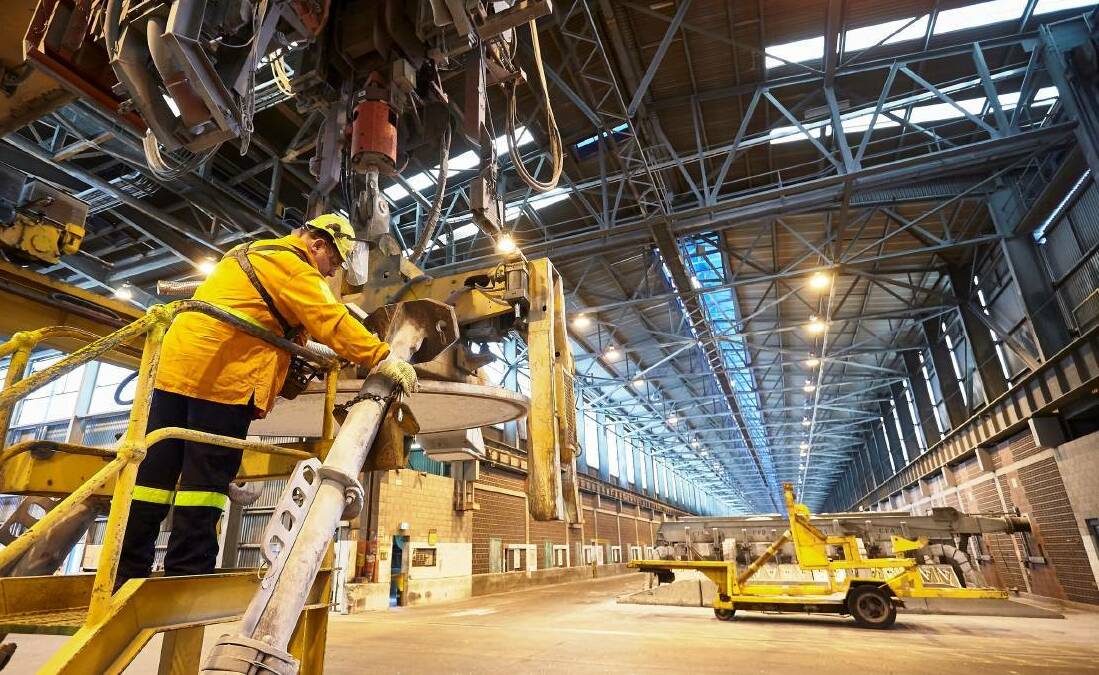
Tomago Aluminium, the state's largest energy consumer, will accelerate its decarbonisation push and partner with renewable energy producers in a move that will supercharge the Hunter's clean energy transition.
The company, which hopes to switch to renewable energy by 2029, will work with industry and technology partners to develop opportunities for establishing renewable power generation and energy storage projects in the region and beyond.
The initiative, to be announced on Monday, will also provide a major boost to the construction and development of the $100 billion Hunter Renewable Energy Zone.
The company will call for expressions of interest to develop, invest in or procure long-term traceable renewable energy and dispatchable firm power generation projects or contracts to supply its production assets and underpin its decarbonisation strategy and net-zero ambition.
Tomago Aluminium chairman David Fallu said the company would play a leading role in the state's clean energy transition.
"Tomago Aluminium is NSW's largest energy user and as such plays a pivotal role in shaping future renewable energy investment in the state," he said.
"This is a significant opportunity to collaborate and drive investment in competitive firmed renewable energy sources. We are committed to transitioning the business to a low carbon future, and this is a key step towards reaching that very important goal."
Tomago Aluminium is an independently managed unincorporated joint venture of Rio Tinto, Gove Aluminium Finance and Norsk Hydro.
Aluminium is Australia's sixth largest export, which generates $11.9 billion in revenue annually.

Tomago Aluminium is the largest and most efficient of Australia's four operating aluminium smelters and the only one based in NSW.
The smelter supports more than 6000 direct and indirect jobs. It generates disposable income of almost $500million annually and $465million in incremental government revenues, of which $120million is captured by NSW.
The Tomago facility operates uninterrupted, requiring a constant 950 megawatts or 12per cent of NSW's grid capacity.
It also has the largest fast-acting 'interruptible' load which can take up to 950megawatts off the national energy market in minutes.
"Tomago Aluminium is well placed to collaborate with industry to lower the risk profile of delivering significant commercially viable renewable energy projects in addition to supporting network stability through the energy transition," Mr Fallu said.
The recent Australian Industry Energy Transitions Initiative report estimated that $8 billion would be required to be invested in transmission storage infrastructure for Tomago Aluminium to make the switch to clean energy.
The initiative brings together key industry and finance companies to accelerate action towards achieving net-zero emissions in supply chains by 2050.
The report says a $3.9 billion capital investment in renewable energy infrastructure and a further $4 billion for battery storage will be required to allow Tomago Aluminium to decarbonise.
The 660 megawatt Hunter Power Project at Kurri, the 700 megawatt Waratah Battery, a similar 700 megawatt battery earmarked for the Eraring Power Station site, and AGL's Hunter Energy Park earmarked for the Liddell power station site are likely to play prominent roles in assisting heavy industry to transition to clean energy.
The projects for part of the new generation and transmission infrastructure in the Hunter-Central Coast Renewable Energy Zone (REZ), one of four REZ's being established across the state.

Commercial interest has been registered for more than 80 projects across the fields of solar energy, onshore and offshore wind energy, large-scale batteries and pumped hydro projects.
The projects together have the potential to deliver more than 100,000 gigawatt hours of renewable energy a year - equivalent to the annual output of up to 10 coal fired power stations.
The first of more than a dozen tenders will open next month for the construction of 1 gigawatt or 2,500 gigawatt hours of new wind and solar, and another 600megawatts of long duration storage.
The first tender will focus on the Central West Orana zone, which is seeking to build at least 5.5 gigawatts of capacity over time.
The government has set targets for high local content to encourage the creation of a local manufacturing and supply industry.
WHAT DO YOU THINK? We've made it a whole lot easier for you to have your say. Our new comment platform requires only one log-in to access articles and to join the discussion on the Newcastle Herald website. Find out how to register so you can enjoy civil, friendly and engaging discussions. Sign up for a subscription here.







